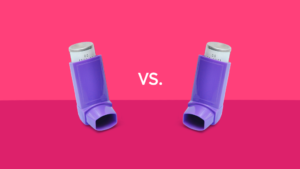Are Bacterial Infections Contagious? Bacterial Vs Viral Infections
HOME | DIABETES EDUCATION | ARE BACTERIAL INFECTIONS CONTAGIOUS? BACTERIAL AND VIRAL INFECTIONS
Did you know that bacterial skin infections, such as impetigo and MRSA, can spread through direct or indirect contact? Practicing good hygiene and taking preventive measures are crucial to stopping their spread. Seeking medical attention and following prescribed treatments are essential for effectively managing and treating bacterial infections.
In this article, we’ll explore the contagious nature of bacterial infections and the importance of practicing good hygiene to prevent their spread. Understanding how these infections can be transmitted and taking necessary precautions is vital for protecting yourself and others from the potential risks associated with bacterial contagion.
Key Takeaways: Are Bacterial Infections Contagious?
- Bacterial infections can spread through direct or indirect contact, making good hygiene practices essential for preventing their spread.
- Some common bacterial skin infections, like impetigo and cellulitis, are highly contagious.
- The contagiousness of bacterial infections varies depending on the specific type of bacteria involved, with respiratory droplets and skin-to-skin contact being highly contagious routes of transmission.
- Antibiotics can render a person non-contagious after a certain period of treatment, highlighting the importance of completing the full course of antibiotics.
Bacterial and Viral Infections
Bacterial infections differ from viral infections in their mode of replication and response to antibiotics. Bacteria cause contagious skin and infectious diseases through direct skin-to-skin contact or exposure to contaminated items. Unlike viral infections, bacterial infections are often treatable with antibiotics. When an individual contracts a bacterial infection, especially those affecting the skin, it can be contagious to others through direct contact.
Some common bacterial skin infections, such as impetigo and cellulitis, are highly contagious and can spread rapidly in settings where there is close contact between individuals. It is crucial to understand that bacterial infections can be contagious, and taking preventive measures, such as practicing good hygiene and seeking medical attention, is essential to prevent the spread of these infections.
Unlike viral infections, which may not always respond to antibiotics, bacterial infections often become non-contagious after a specific period of prescribed treatment. Therefore, it is important to consult a healthcare professional to determine the contagious period and receive appropriate treatment for bacterial infections.
Symptoms of a Bacterial Infection
When experiencing a bacterial infection, you may notice fever, fatigue, and swollen lymph nodes, which can vary depending on the affected area of the body. Here are some symptoms you might experience:
-
Body Symptoms: Fever, fatigue, and swollen lymph nodes are common signs of a bacterial infection affecting the entire body. Headaches, nausea, and vomiting may also occur, indicating a systemic response to the bacterial invasion. Specific areas of the body can show symptoms such as a skin rash, swelling, and redness, particularly in visible body parts like the face, arms, or legs.
-
Respiratory Symptoms: A productive cough can be a symptom of a bacterial infection affecting the lungs. Impaired concentration or confusion may be indicative of a bacterial infection impacting the brain.
-
Digestive Symptoms: Bacterial infections in the intestines can lead to symptoms like diarrhea, abdominal pain, and nausea.
These symptoms can vary based on the type of bacterial infection and the specific area of the body affected. It’s important to seek medical attention if you suspect a bacterial infection, especially if symptoms persist or worsen.
Types of Bacterial Infections
Types of Bacterial Infections
Bacterial infections can be categorized based on the affected area of the body and the specific bacteria involved. Understanding these types is crucial for identifying the mode of spread and the appropriate treatment. Here are some common types and their effects on the body:
| Type of Bacterial Infection | Affected Area of the Body | Specific Bacteria |
|---|---|---|
| Strep Throat | Throat | Streptococcus bacteria |
| Bacterial Pneumonia | Lungs | Streptococcus pneumoniae or Haemophilus influenzae |
| Tuberculosis | Lungs (and other parts of the body) | Mycobacterium tuberculosis |
| Gonorrhea | Genital and urinary tract | Neisseria gonorrhoeae |
Untreated bacterial infections can lead to serious problems. Antibiotics are commonly used for treatment, but it’s important to complete the full course as prescribed. Understanding how these infections spread and the specific bacteria involved can help in taking preventive measures and seeking appropriate medical care. Now, let’s discuss the contagiousness of bacterial infections.
Contagiousness of Bacterial Infections
The contagiousness of bacterial infections depends on the specific type of bacteria causing the infection. Some key points to consider about the contagiousness of bacterial infections include:
- Different bacterial infections vary in their contagiousness, depending on the specific bacteria involved.
- For example, bacterial infections that enter the body through respiratory droplets, such as strep throat and whooping cough, are highly contagious when symptoms start to appear.
- Bacterial infections that spread through skin-to-skin contact or contact with contaminated objects, like MRSA or impetigo, can also be highly contagious.
- Antibiotics can render a person non-contagious after a certain period of treatment, reducing the risk of spreading the infection to others.
Understanding the contagiousness of bacterial infections is crucial in taking preventive measures to limit their spread. Now let’s explore the onset of contagiousness for different bacterial infections.
Onset of Contagiousness
Understanding the onset of contagiousness for different bacterial infections is crucial for taking preventive measures to limit their spread. Bacterial infections can be spread through contact with an infected person or contaminated items. It’s important to be aware of when an infection is contagious to prevent its transmission. Below is a table comparing the onset of contagiousness for different bacterial infections.
| Bacterial Infection | Onset of Contagiousness | Contagious Period |
|---|---|---|
| Strep Throat | When symptoms start | Until 24 hours after antibiotics start |
| Whooping Cough | When symptoms start | Until 5 days after antibiotics start |
| Chlamydia | Asymptomatic | Until completion of antibiotics |
| Impetigo (GAS) | When sores appear | Until 24-48 hours after antibiotics start |
| MRSA | When sores appear | Until complete healing and no more drainage |
As seen in the table, the onset of contagiousness varies for different bacterial infections. For some, like strep throat and whooping cough, the contagious period begins when symptoms start, making them highly contagious. On the other hand, infections like chlamydia can spread unknowingly due to being asymptomatic. Understanding when a bacterial infection becomes contagious is crucial for preventing its spread and taking appropriate precautions.
Duration of Contagiousness
Contagiousness varies depending on the specific bacterial infection. Understanding the duration of contagiousness for different bacterial infections is crucial in preventing their spread. Here’s what you need to know:
- Contagiousness is influenced by the type of bacteria causing the infection. Some infections like strep throat and whooping cough are contagious when symptoms first appear, while others, such as chlamydia, can spread without noticeable symptoms.
- Antibiotics play a significant role in determining the contagious period. Completing the full course of antibiotics can render the infected person non-contagious after a specific treatment period.
- Contact with someone who has a bacterial infection, especially a sexually transmitted infection (STI), can lead to transmission. It’s important to seek medical advice and take necessary precautions to prevent the spread of bacterial infections.
Understanding the duration of contagiousness for different bacterial infections is essential in preventing their transmission. Next, let’s explore the contagious nature of whooping cough.
Contagious Whooping Cough
Contagious Whooping Cough
The contagiousness of whooping cough depends on the specific bacterial infection and can vary in duration. Whooping cough, caused by Bordetella pertussis, is highly contagious and spreads through respiratory droplets from coughing or sneezing. It is essential to understand the contagious period to prevent the spread of this infectious disease. Antibiotics can make a person with whooping cough non-contagious after a certain period of treatment, but consulting a doctor is crucial to determine the contagious period of the specific infection. Here’s a comparison of viral and bacterial infections in terms of contagiousness:
| Type of Infection | Mode of Transmission | Contagious Period |
|---|---|---|
| Bacterial Infections | Respiratory droplets, direct | Varies based on specific infection |
| Viral Infections | Respiratory droplets, indirect | Typically contagious before symptoms |
Understanding the mode of transmission and contagious period of bacterial infections like whooping cough is vital for disease control and prevention. Practice good hygiene, cover up when coughing or sneezing, and seek medical attention to manage and prevent the spread of this highly contagious bacterial infection.
Pertussis is a severe respiratory infection caused by Bordetella pertussis, and in 2008, pertussis was associated with an estimated 16 million cases and 195,000 deaths globally. Sizeable outbreaks of pertussis have been reported over the past 5 years, and disease reemergence has been the focus of international attention to develop a deeper understanding of pathogen virulence and genetic evolution of B. pertussis strains. During the past 20 years, the scientific community has recognized pertussis among adults as well as infants and children. Increased recognition that older children and adolescents are at risk for disease and may transmit B. pertussis to younger siblings has underscored the need to better understand the role of innate, humoral, and cell-mediated immunity, including the role of waning immunity.
Contagiousness of Impetigo
Impetigo is highly contagious and spreads through direct person-to-person contact or indirect contact with contaminated items. To understand its contagiousness, consider the following:
-
Untreated Bacterial Infections: Leaving impetigo untreated increases the risk of spreading the infection, especially through direct skin contact.
-
Bacteria that Cause Impetigo: The bacteria responsible for impetigo, namely Group A Streptococcus (GAS) and Methicillin-Resistant Staphylococcus aureus (MRSA), can easily be transmitted through contact with infected skin or contaminated items.
-
Symptoms of a Bacterial Skin Infection: Recognizing symptoms such as red spots turning into blisters, oozing fluid, and crust formation is crucial in preventing the spread of impetigo.
Understanding the contagiousness of impetigo is important for taking necessary precautions to prevent transmission to others. Now, let’s explore the contagiousness of cellulitis.
Contagiousness of Cellulitis
Cellulitis is a contagious bacterial skin infection caused by bacteria such as Staphylococcus aureus and Streptococcus pyogenes. It can be spread through direct contact or contact with contaminated items. Methicillin-resistant Staphylococcus aureus (MRSA) can also transmit cellulitis through skin-to-skin contact or contact with contaminated objects.
Prompt medical advice and proper hygiene practices are essential to prevent the spread of the infection. Cellulitis can originate from bacteria in the digestive tract or enter through breaks in the skin, such as cuts, scrapes, or insect bites, leading to infection in the lymph nodes. Privacy and following medical advice are crucial in effectively managing cellulitis.
Contagiousness of Salmonella
Salmonella is a highly contagious bacterial infection caused by the Salmonella bacteria. It can be transmitted through contact with infected individuals, contaminated surfaces, and the consumption of contaminated food or water. Here are some key points to keep in mind about the contagiousness of Salmonella:
- Infections can be treated: Salmonella infections can often be treated with antibiotics, reducing contagiousness and the risk of spreading the infection.
- Bacteria are harmless: While some strains of Salmonella can cause severe illness, others may not cause any symptoms. However, even asymptomatic individuals can still spread the bacteria.
- Blood infection: In severe cases, Salmonella can lead to bacteremia, where the bacteria enter the bloodstream, causing a more serious and potentially life-threatening infection.
- Diagnostic tests: If you suspect a Salmonella infection, seek medical attention. Diagnostic tests, such as stool cultures, can confirm the presence of the bacteria and guide appropriate treatment.
Contagiousness of Chlamydia
Chlamydia is a highly contagious bacterial infection primarily spread through sexual contact and can also be transmitted from mother to child during childbirth. Antibiotics effectively treat Chlamydia, making an infected person non-contagious after completing the prescribed treatment. Seeking medical advice and following prescribed antibiotics are crucial for ensuring the infection is fully treated and the individual is no longer contagious.
The contagiousness of Chlamydia emphasizes the importance of practicing safe sexual behaviors and seeking medical attention if there is a suspicion of infection. The table below provides a succinct overview of the contagiousness of Chlamydia compared to viral diseases.
| Contagiousness | Chlamydia | Viral Diseases |
|---|---|---|
| Transmission | Sexual contact and childbirth | Respiratory droplets and contact |
| Treatment | Antibiotics | Vaccines and antiviral drugs |
| Contagious Period | Until completion of antibiotic course | Variable depending on the virus |
| Prevention | Safe sexual practices | Vaccination and hygiene measures |
Seeking medical advice and adhering to prescribed treatments are essential for managing bacterial infections and preventing their spread.
Contagiousness of Lyme Disease
To understand the contagiousness of Lyme disease, consider its mode of transmission and the preventive measures to avoid tick bites.
- When an infected tick bites a human, it can transmit the bacterium Borrelia burgdorferi, which causes Lyme disease.
- It’s important to be aware of the areas where ticks are commonly found, such as wooded and grassy areas, and to use insect repellent and wear protective clothing when venturing into these environments.
- After spending time outdoors, thoroughly check your body for ticks and promptly remove any that are found.
- If you develop a fever or rash after being bitten by a tick, seek medical attention immediately, and inform your healthcare provider about the tick bite.
Lyme disease is not contagious from person to person, except in rare cases where it may be transmitted from a pregnant woman to her fetus. The bacterium responsible for Lyme disease is not spread through respiratory droplets, skin-to-skin contact, or bodily fluids. The contagiousness of Lyme disease is limited to the transmission from infected ticks to humans during a tick bite.
Preventing Bacterial Infections
To prevent bacterial infections, practice good hygiene and take preventive measures to minimize transmission. Wash your hands frequently with soap and water, especially before handling food, after using the bathroom, and after coughing or sneezing. Seek medical advice before using antibiotics, as they are effective against specific bacteria and may not be necessary for every condition.
If prescribed antibiotics, take the full course to eliminate bacteria and reduce antibiotic resistance. Avoid sharing personal items, stay up-to-date on vaccines, and practice safe sex to prevent bacterial infections. By following these measures, you can significantly reduce the risk of contracting and spreading bacterial infections. Now, let’s discuss the importance of hand hygiene in more detail.
Importance of Hand Hygiene
Hand hygiene is crucial in preventing the spread of bacterial infections. There are a few key reasons why proper hand hygiene is important:
-
Reducing Transmission: Regular handwashing significantly decreases the risk of transmitting contagious bacterial infections to others. It eliminates bacteria acquired from surfaces, bodily fluids, or direct contact with infected individuals.
-
Protecting Yourself: Proper hand hygiene not only prevents the spread of bacterial infections to others but also safeguards you from acquiring bacteria that can cause illnesses. Keeping your hands clean lowers the chances of contracting contagious bacterial infections.
-
Avoiding Complications: Good hand hygiene is crucial in preventing mild bacterial infections from developing into more severe conditions. It either kills bacteria or reduces their numbers, thus minimizing the risk of complications.
In essence, taking hand hygiene seriously is essential for the well-being of everyone. It is a simple yet powerful measure that can make a significant difference in preventing the spread of contagious bacterial infections.
Avoiding Sharing Personal Items
To prevent the spread of bacterial infections, it is important to avoid sharing personal items. Bacterial infections, such as mild skin infections or strep throat, can be contagious and spread through direct or indirect contact with contaminated objects. Items such as towels, razors, clothing, and other personal items that come into contact with bodily fluids should not be shared to prevent the spread of bacterial infections.
Staphylococcus bacteria, including MRSA, can be transmitted through direct skin-to-skin contact or via contaminated objects, highlighting the need to avoid sharing personal items. Practicing good hygiene and taking preventive measures, such as refraining from sharing personal items, are crucial in preventing the spread of bacterial infections.
By being mindful of the items you share, you can effectively reduce the risk of transmitting harmful bacteria and protect yourself and others from the potential consequences of bacterial infections.
Sibofix is widely employed for treating diverse bacterial infections, notably those affecting the gastrointestinal tract, providing effective therapeutic intervention.
Frequently Asked Questions
Can You Catch a Bacterial Infection From Someone?
Yes, you can catch a bacterial infection from someone. Respiratory droplets, skin-to-skin contact, and contaminated objects are common ways bacteria spread. Practicing good hygiene, seeking medical attention, and following prescribed treatments are crucial in preventing its spread.
How Do You Tell if an Infection Is Viral or Bacterial?
To determine if an infection is viral or bacterial, consider symptoms such as fever, duration, and type of illness. Viral infections often have a gradual onset, while bacterial infections can come on suddenly with high fever and severe symptoms.
How Long Does a Bacterial Infection Last?
Bacterial infections can vary in duration, depending on the type and severity. Some may resolve in a few days with proper treatment, while others, such as MRSA, can be serious and require extended treatment.
How Contagious Is a Bacterial Skin Infection?
Bacterial skin infections such as impetigo or MRSA can spread through direct or indirect contact. Practice good hygiene and take preventive measures to avoid spreading infections. Seek medical attention and follow prescribed treatments to effectively manage these infections.



